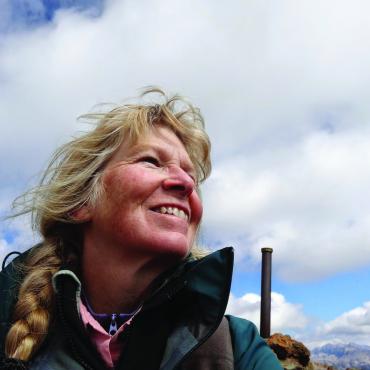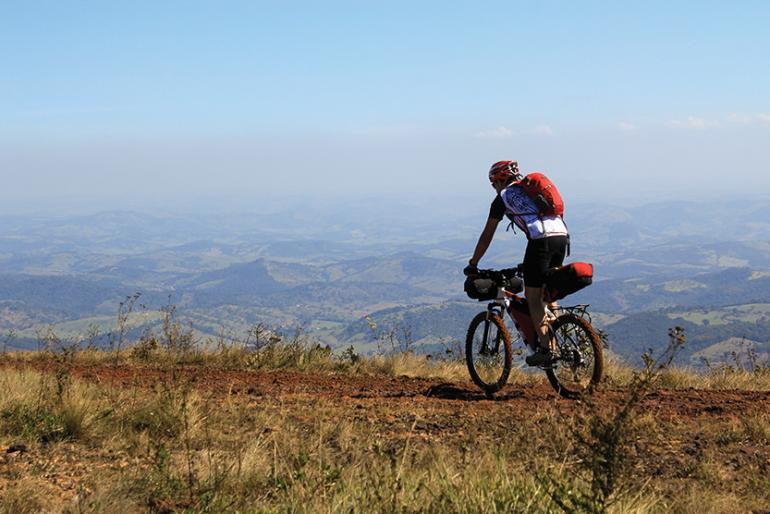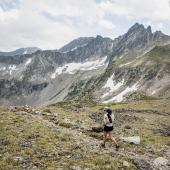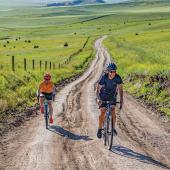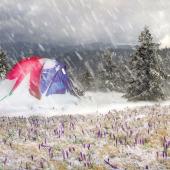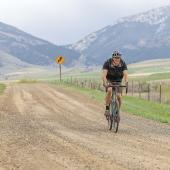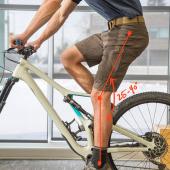Two-Wheeled Wanderlust
Pedaling a lifelong dream.
As free-range children, my brother and I grew up riding ten miles to Ryan Park for an ice-cream bar. Then, for my 14th birthday, my realm of adventure amplified with a bike ride through Scotland, pedaling each day to an unknown bed-and-breakfast, often storing our bikes in sheep sheds. This was long before widespread use of the internet, smartphones, or associated apps. We carried a paper map and started each day with no reservations—lodging or otherwise.
The joy I felt on that Scotland trip was the same enthusiasm I felt on rides with my brother—and through time, I’ve never lost that childlike joy, even if it’s just the commute to work. So, when a milestone birthday approached, the decision to hop on two wheels was an easy one. My mind gravitated to my adventurous days in Scotland, and though a bit older, I thought “How about a bikepack?”
First Things First
I already had an assortment of gear in the shed, and it was daunting to think about accumulating more. My husband Don had recently upgraded to a Salsa Timberjack, but I decided to stick with my old-school Rocky Mountain. We went with flat pedals rather than clip-ins.
While shopping for waterproof storage bags, a local bike-shop guru recommended a Salsa kit for Don that included rear panniers and a frame pack for his sleeping bag. As for me, I made a spontaneous decision and bought Oveja Negra bags. I picked up a frame pack, handlebar bag, small top-tube bag, and later added an Ortleib seat bag, as my Rocky Mountain had no way to attach a pannier rack. In building our travel kits, bike shops were incredibly helpful, as well as online bikepacking groups.
Trial Run
Now the proud owners of bikepacking gear, a test-run was in order. Our first flush of success came in actually getting everything loaded on the bikes. We each carried 32 pounds and I wouldn’t want any more. We had a steri-pen for water filtration and long-sleeved fishing hoodies to keep sunburns at bay.
With loaded bikes, it felt great to leave our house, rid ourselves of motors, and point toward the mountains. Our approach started on a paved road, then continued ten miles on a dirt road where we camped for the night. The next day, our curiosity led us down a shaded singletrack, where we ran into to our first gear failure and first real lesson of bikepacking: always bring spare pannier clips! Or at least duct tape and voile straps. I’ve fixed buckles with straps and tape before, but it’s always a good idea to have a spare buckle.
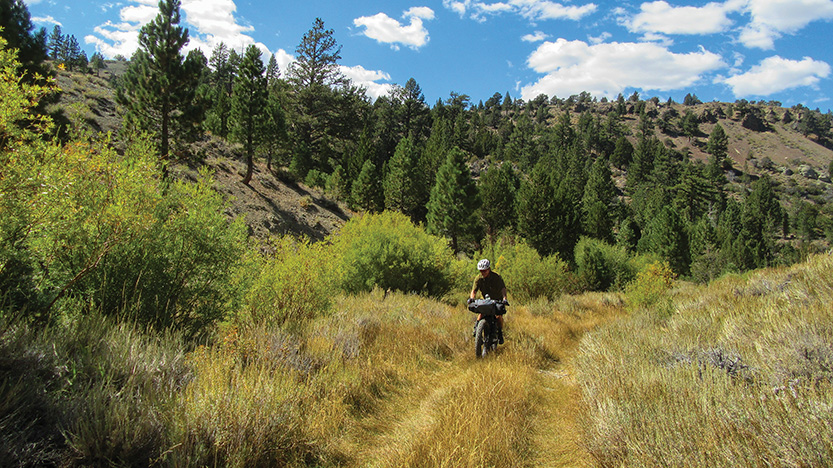
Selecting a Route
Part of the joy of bikepacking is simply realizing the world of human-powered adventure travel. You can link highway approaches to gravel roads, and logging roads to singletrack. You can seek deep solitude in grizzly country, or take your credit card for a tour at a wood-fired-pizza place. There is even a house-stay website (warmshowers.com) specifically for bikepackers, if you want the occasional shower and bed.
In general, we found it manageable to accomplish 35 miles per day on logging roads, less on singletrack, and a lot more on pavement. If not doing a loop, make sure to research shuttle options. Keep your training in line with what you want to ride, whether that’s half-days with time for exploration, or 11-hour days with your head down.
Timing
Summer is a great time for high-country rides, with long days and flowers galore, but you’ll no doubt be sharing the route with more travelers, not to mention bugs. In the fall, many of the tourists have gone home, and the days and nights are cooler. Time it with some good weather and you’ll have grand colors with a sparkling night sky.
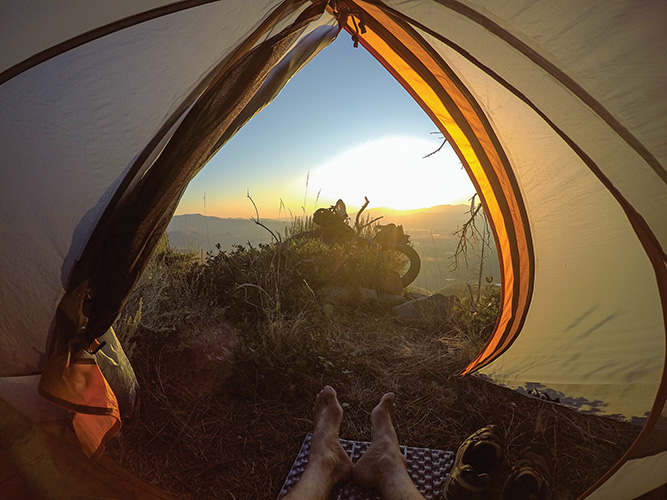
The Wonder of the Trail
Even with our expected thrills, both Don and I found bikepacking even more rewarding than anticipated. There were moments of serendipity, like when we spotted twin bear cubs, or the moose calves, or the first lynx I ever saw. There are the benefits of no cell service, rolling along for miles practicing unused conversation skills. There is the satisfaction of making it through challenging sections, especially without (intentional) bodily harm.
Perhaps most delightful, though, are the friendships formed on the trail. For us, it was a fellow named Martin, who we met on a long trip in northwest Montana. Through spontaneously running into him at various spots, we learned a lot about him—his life in Switzerland as well as his travels around the world. Don provided him with a music playlist that accompanied him all the way to Mexico. His company on the trail was fleeting, but at the end of our ride, we ran into him a final time at a small-town brewpub, where we finally sat down and shared a well-earned beverage, along with tales of our time spent on two wheels among the mountains, fields, and forests of Montana.
Bikepacking and planning go hand in hand. Use these resources to make your trip that much smoother, safer, and more fun. —Traute Parrie
Websites
adventurecycling.org. A bike-traveler club with all kinds of benefits, including GPS navigation apps, paper maps, subscription to Adventure Cyclist magazine, digital newsletters, and resources galore.
bikepacking.com. A comprehensive online resource for everything from getting started to global adventures.
Books
Ultralight Bike Touring and Bikepacking by Justin Lichter and Justin Kline
Escape by Bike by Joshua Cunningham
People & Places
Adam Sklar; Sklar Bikes, Bozeman
Alter Cycles, Bozeman
Gallatin Alpine Sports, Big Sky
Andy Baranovic; Spoke Wrench Bike Shop, Red Lodge
Suggested Rides
Gallatin Trail. 75% singletrack, 112 miles, ~3 days
bikepacking.com/routes/the-gallatin-trail
Butte Batholith Trail. 85% singletrack, 95 miles, ~3 days
bikepacking.com/routes/butte-batholith-route-montana
Prairie Breaks Loop. 94% unpaved, 359 miles, ~7 days
bikepacking.com/routes/prairie-breaks/
Greater Yellowstone Trail. 260-mile loop, linking portions of Yellowstone Park in Montana, Idaho & Wyoming
wyopath.org/our-work/pathways-projects/greater-yellowstone-trail
Riding the Rails
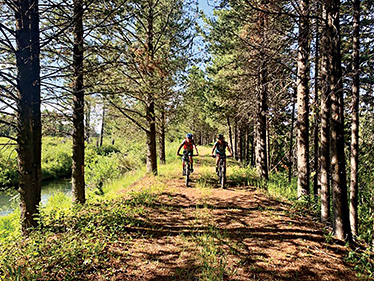
The Continental Divide Trail (CDT) is a choice bikepacking trip—the whole thing if you’ve got some time, or single sections if you’re looking for something shorter. Lucky for all CDT travelers, there’s a new trail in the works that will offer easy access to West Yellowstone. The Yellowstone Shortline Trail will follow the historic route of Union Pacific’s Oregon Short Line Railroad through the Custer-Gallatin, which will take you right to the edge of town, and allow you to hop off your bike and head in for a cold beer, food resupply, or even a hot shower and comfy bed for the evening. Though they’re still raising funds, construction is slated to start in 2021. —Cordelia Pryor


